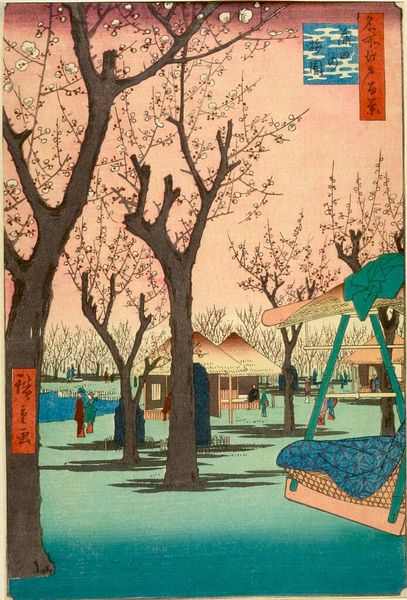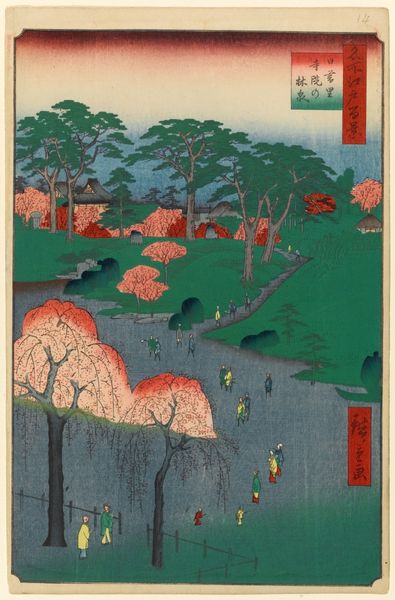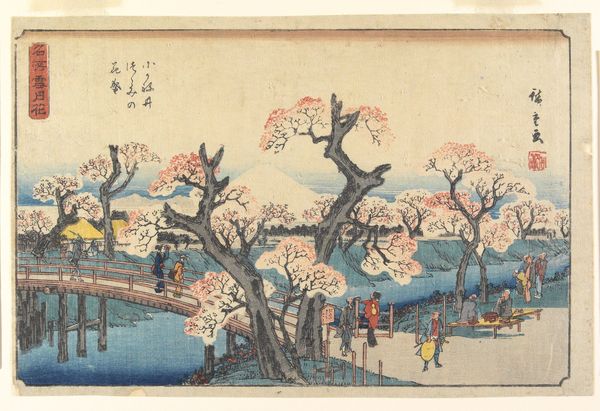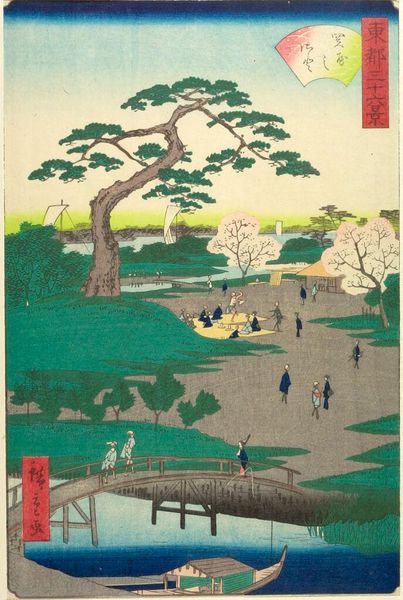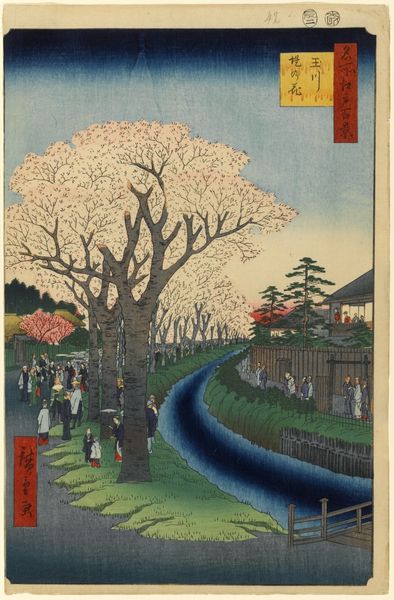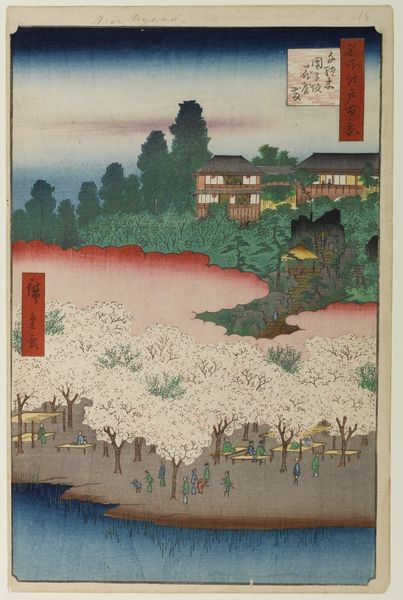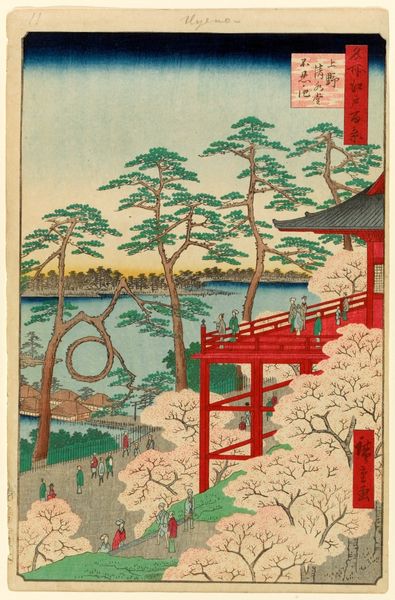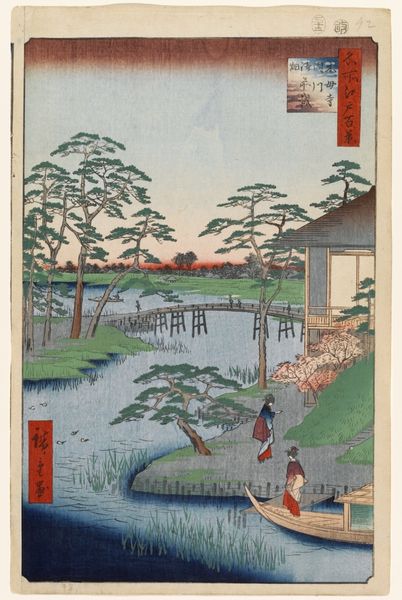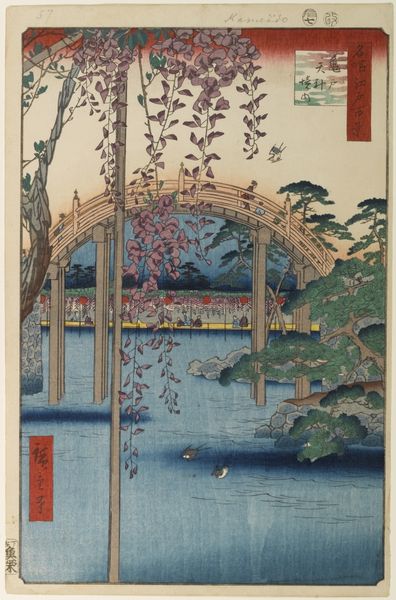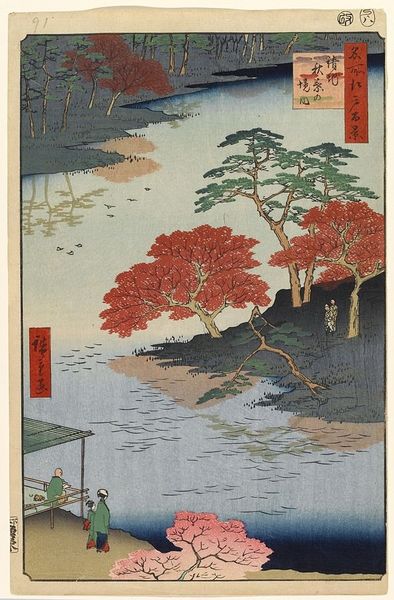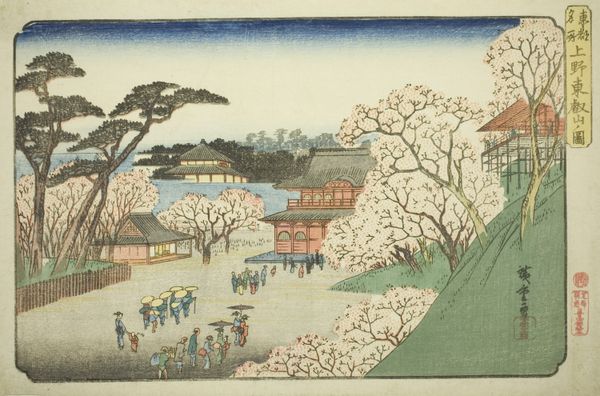
print, woodblock-print
# print
#
asian-art
#
landscape
#
ukiyo-e
#
woodblock-print
Copyright: Public domain
Curator: Ah, a stunning print by Utagawa Hiroshige, titled "27. Plum Orchard in Kamada," created in 1857. It's a beautiful example of a Japanese woodblock print, also known as ukiyo-e. Editor: My first impression is how deceptively simple yet emotionally dense this is. It evokes a serene stillness with that hazy rose sky and those seemingly barren trees about to explode in a flurry of white. There is an impending sense of expectation about this landscape that resonates with the soul. Curator: Yes, precisely! Hiroshige masterfully employs compositional structure to evoke depth and narrative. Notice how the large trees frame the scene, leading the eye into the distance and guiding us towards the series of tea houses in the mid-ground, subtly placed to draw our eyes into that very setting. The use of perspective, although not perfectly linear by Western standards, creates a sense of receding space. Editor: And those prunus blossoms popping up! Such delicate, subtle markings against the dark, weathered tree branches! Each one like a tiny burst of joy in a stark but very hopeful landscape. What were the people doing there, I wonder? Curator: The print would've been mass-produced as part of a series, affordable to many. Prints such as these created accessibility, effectively democratizing access to aesthetic and refined appreciation, making scenes that otherwise would only have been appreciated by wealthy and connected aristocrats or wealthy merchants available to everyday members of the urban and merchant classes. The subject is probably part of what made it desirable. Editor: That’s incredible; so much for so little! The idea of a plum orchard transformed into a place for social connection and reflection - this blend is utterly fascinating! All the elements – nature, people, art converging harmoniously to offer us this quiet scene. What could we possibly ask more of an artwork! Curator: It really does encapsulate something quintessential about Japonisme, this focus on capturing fleeting moments of beauty in everyday life through seemingly simplistic style and direct approach! Editor: I concur. As we now conclude our discussion, one might ponder, that despite being crafted over a century ago and emerging from a distinctly diverse setting, how effectively does this creation traverse space and time to stir inside us this sense of expectant solace, quiet repose, and sublime fulfillment, today!
Comments
No comments
Be the first to comment and join the conversation on the ultimate creative platform.
